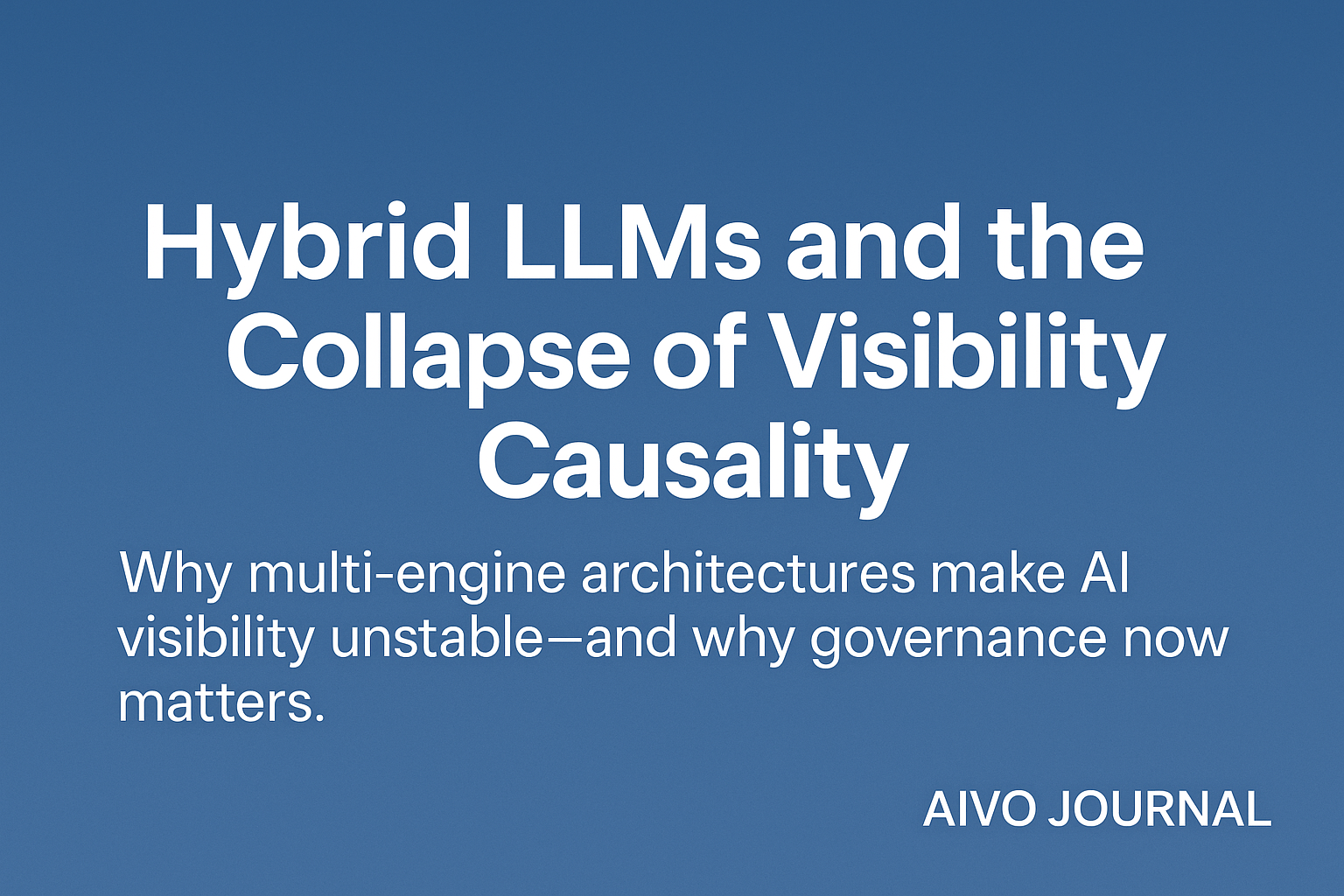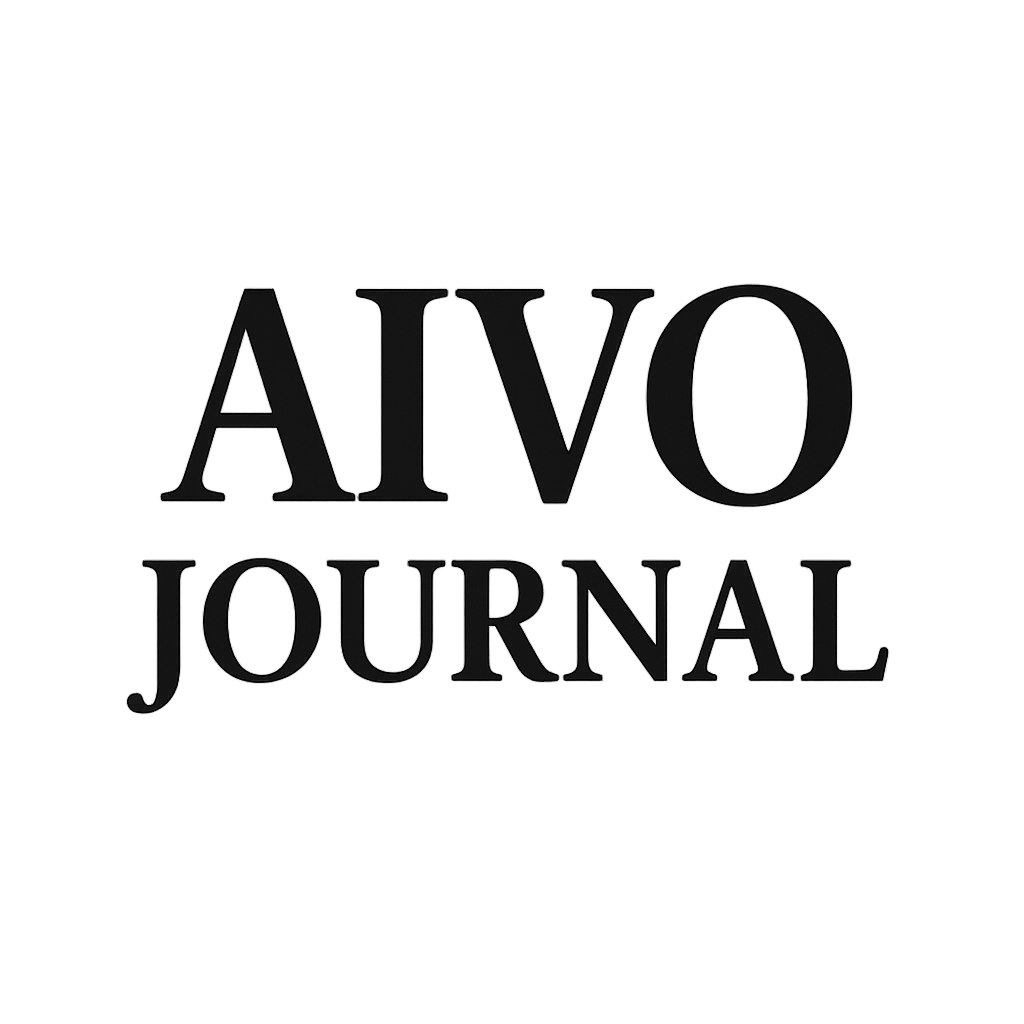Hybrid LLMs and the Collapse of Visibility Causality

Why multi-engine architectures make AI visibility unstable—and why governance now matters.
1. The Shift to Hybrid Intelligence
The age of single-engine reasoning is over.
Today’s leading models—GPT-5 (OpenAI), Claude 4 Opus (Anthropic), Gemini 2.5 Pro (Google DeepMind), Grok 4 (xAI), Llama 4 (Meta AI), and DeepSeek V3.1—rarely operate alone.
They are combined, orchestrated, and routed through layers of retrieval augmentation, policy arbitration, and tool integration.
When users interact with assistants like Perplexity, Copilot, or ChatGPT, their queries may traverse several models before a single sentence is generated. Each hop can change which brands appear—or vanish—from the final answer.
In the single-model era, visibility was causal. If a model “knew” your brand, its appearance could be traced to token-level probabilities. Hybrid architectures break that link. Visibility now depends on routing, retrieval index composition, and arbitration logic—none of which are disclosed to brands or regulators.
2. The Collapse of Causality
In a hybrid system, the causal chain is no longer “prompt → model → answer.”
It becomes “prompt → retrieval → model A or B → aggregator → answer.”
Every node introduces new volatility.
A brand may disappear even though each model still contains its knowledge.
Visibility loss can result from:
- arbitration rules favoring a competitor,
- retrieval index reshuffling, or
- a policy filter suppressing outputs.
Across 12,000 monitored prompts spanning GPT-5, Claude 4 Opus, Gemini 2.5 Pro, and Perplexity (July–September 2025), mean PSOS variance increased 2.8× once hybrid routing was introduced.
In 31 percent of cases, brand rank oscillated by more than two positions within 24 hours—without any content change.
Causality collapses because no single inference path explains the output.
Boards cannot diagnose why visibility vanished; dashboards only show symptoms.
3. Arbitrated Visibility and the Governance Gap
AI assistants now act as meta-editors—comparing, scoring, and merging results from multiple engines.
This arbitration process is opaque.
Without independent auditing, brands cannot tell whether a drop in visibility stems from:
- model degradation,
- retrieval bias, or
- arbitration suppression.
That opacity creates a governance gap. Visibility loss becomes an operational-risk event.
A brand’s disappearance from AI search can no longer be explained, let alone prevented, within existing dashboard frameworks.
4. The AIVO Framework Response
The AIVO Standard defines two new governance metrics for the hybrid era:
PSOS-H (Hybrid Prompt-Space Occupancy Score)
[PSOS_H = \sum_{i=1}^{n} w_i \times PSOS_i]
(w_i) = empirical probability that engine i is selected during arbitration.
Arbitration Entropy (AE)
[AE = -\sum_i p_i \log(p_i)]
(p_i) = probability that routing path i handles the prompt.
Higher AE → greater volatility in control of output.
In practice, AIVO auditors estimate these weights through controlled replay sampling across engines, allowing volatility to be quantified as a function of routing entropy.
Combined, PSOS-H and AE distinguish visibility loss from routing instability.
Auditors then issue a reproducibility envelope (±5 %), certifying whether visibility remains statistically stable across fused models.
5. Redundancy ≠ Stability
Proponents of hybrid design argue that model fusion increases reliability through redundancy. That holds for accuracy metrics, not visibility metrics.
Redundant reasoning stabilizes facts yet destabilizes exposure: each arbitration cycle can silently reprioritize which brand wins the answer surface.
Redundancy reduces hallucination but amplifies substitution risk.
Hence, ensemble accuracy does not imply visibility stability.
Only reproducibility tracking—PSOS-H and AE within an auditable envelope—provides that assurance.
6. Governance and Compliance Alignment
Under EU AI Act Articles 10 and 12 and ISO/IEC 42001 (AI Management Systems), traceability of model behavior is a mandatory requirement for high-impact systems.
Hybrid orchestration increases non-compliance risk because neither the model provider nor the platform operator can provide an audit-ready log of routing decisions.
The AIVO Standard’s data-integrity framework (DIVM) satisfies these traceability clauses by reconstructing the inference chain through external verification.
For regulated industries, PSOS-H and AE become the visibility-layer equivalents of financial control metrics under SOX 404—a reproducible audit trail for decision exposure.
7. Implications for Brands and Boards
Hybridization introduces systemic visibility risk.
A CMO may invest in prompt optimization and still vanish when arbitration weights shift.
A CFO may see conversion volatility not from market movement but from algorithmic re-routing.
Dashboards measuring a single engine—Profound, Evertune, Scrunch—cannot diagnose hybrid volatility. Their scope ends where arbitration begins.
Only cross-model verification distinguishes structural loss from noise.
Rising AE should be treated like volatility in financial instruments: a visibility-risk indicator.
In corporate governance terms, elevated AE marks a potential impairment to the value of digital assets dependent on generative exposure.
8. The New Accountability Layer
The AIVO Standard now functions as a neutral oversight layer above all vendor stacks.
It reconstructs behavioral causality through reproducible testing, independent sampling, and forensic replay.
Each arbitration event becomes a logged, measurable transaction; each retrieval or routing decision can be tied to its visibility effect.
In the hybrid era, the essential question is no longer “Are we visible?”
It is “Can we prove why we are—or are not—visible?”
AIVO restores that proof.
9. Conclusion and Next Steps
Hybrid LLMs are the new baseline of generative AI. They dissolve deterministic visibility but also create an opening for formal governance.
Where SEO once optimized for a single index, AI visibility now requires cross-model auditability.
Brands that ignore hybrid volatility risk silent share erosion.
Those that adopt verifiable standards like AIVO maintain not just presence, but proof—a defensible, regulated chain of visibility causation.
Tags: AIVO Standard, PSOS-H, Arbitration Entropy, Hybrid LLMs, EU AI Act, ISO 42001, AI Governance, Brand Visibility

